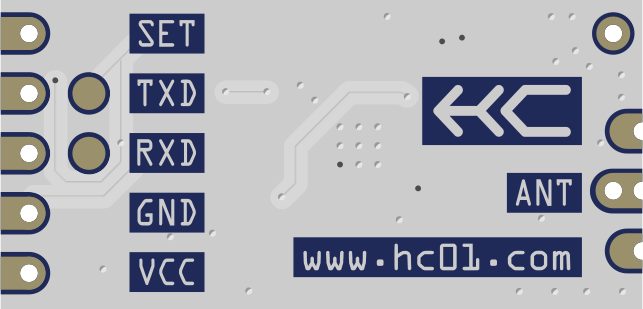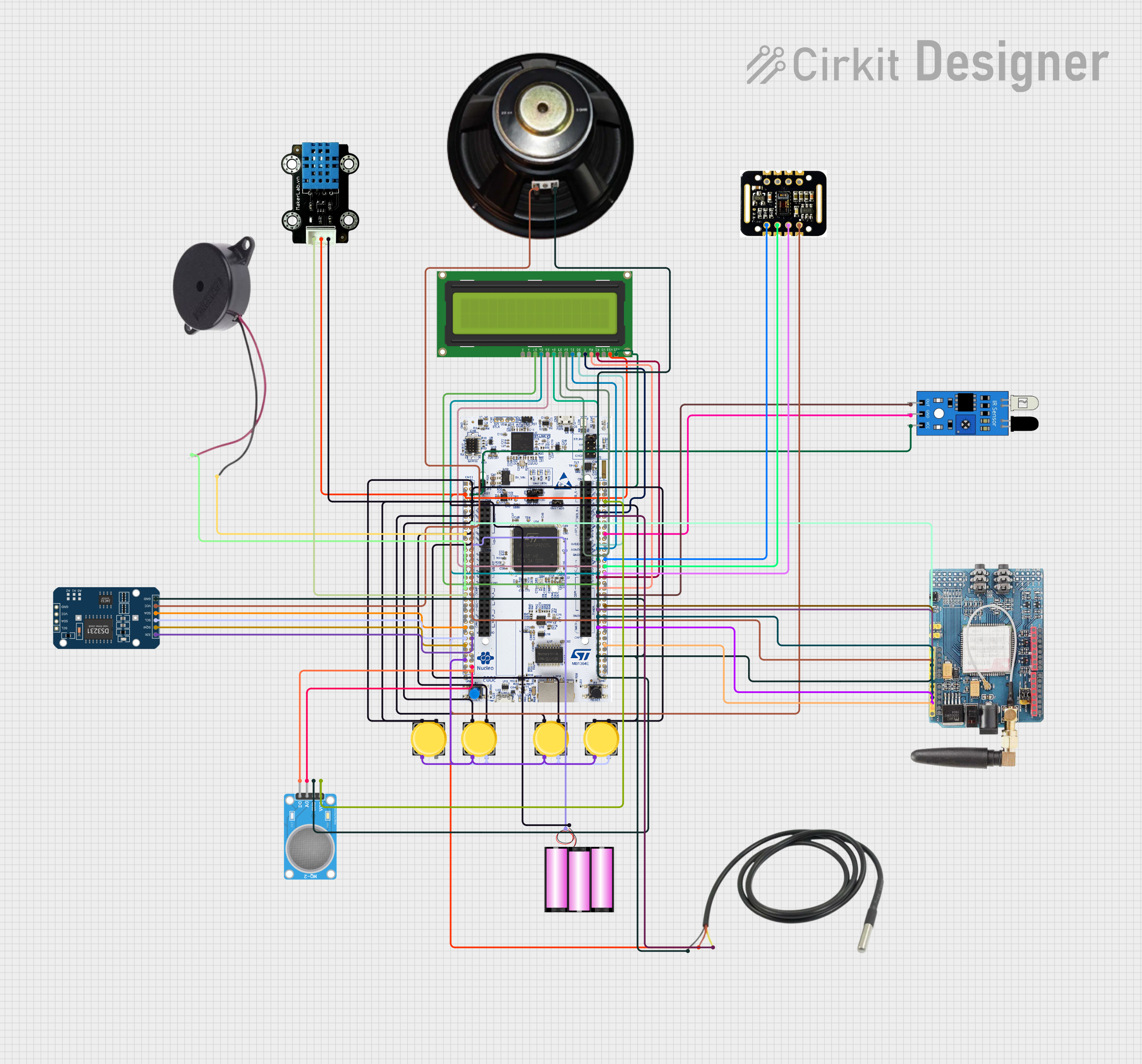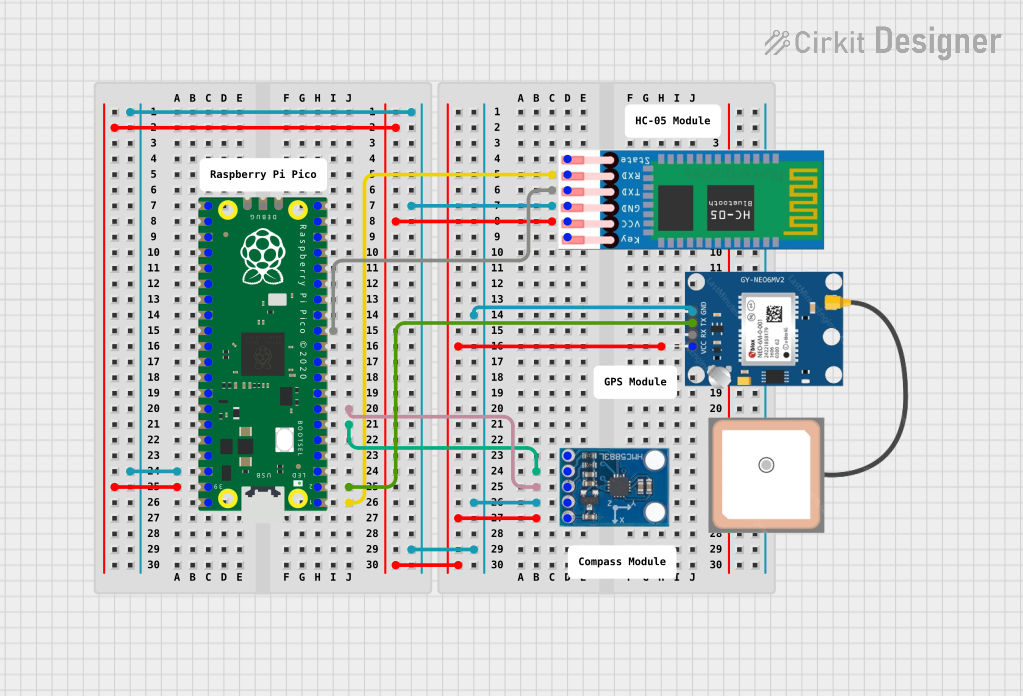
How to Use HC12: Examples, Pinouts, and Specs

 Design with HC12 in Cirkit Designer
Design with HC12 in Cirkit DesignerIntroduction
The HC12 is a low-cost, low-power, 12-bit microcontroller with integrated RF communication capabilities. It is widely used for wireless data transmission in applications such as remote monitoring, home automation, industrial control, and IoT (Internet of Things) devices. The HC12 operates in the 433 MHz frequency band and supports a variety of communication modes, making it a versatile choice for short- to medium-range wireless communication.
Its compact design, low power consumption, and ease of integration make it a popular choice for developers and hobbyists alike. The HC12 is particularly well-suited for projects requiring reliable, long-distance communication with minimal interference.
Explore Projects Built with HC12

 Open Project in Cirkit Designer
Open Project in Cirkit Designer
 Open Project in Cirkit Designer
Open Project in Cirkit Designer
 Open Project in Cirkit Designer
Open Project in Cirkit Designer
 Open Project in Cirkit Designer
Open Project in Cirkit DesignerExplore Projects Built with HC12

 Open Project in Cirkit Designer
Open Project in Cirkit Designer
 Open Project in Cirkit Designer
Open Project in Cirkit Designer
 Open Project in Cirkit Designer
Open Project in Cirkit Designer
 Open Project in Cirkit Designer
Open Project in Cirkit DesignerTechnical Specifications
Below are the key technical details of the HC12 module:
- Operating Voltage: 3.2V to 5.5V
- Operating Current: 16 mA (transmitting), 3.6 mA (receiving)
- Communication Range: Up to 1,000 meters (line of sight, with proper antenna)
- Frequency Band: 433.4 MHz to 473.0 MHz
- Modulation: GFSK (Gaussian Frequency Shift Keying)
- Baud Rate: 1,200 bps to 115,200 bps
- Output Power: Up to 100 mW (20 dBm)
- Antenna Interface: Standard IPEX or soldered wire antenna
- Dimensions: 27.8 mm x 14.4 mm x 4 mm
Pin Configuration and Descriptions
The HC12 module has 4 main pins for interfacing. The table below describes each pin:
| Pin Name | Pin Number | Description |
|---|---|---|
| VCC | 1 | Power supply input (3.2V to 5.5V). |
| GND | 2 | Ground connection. |
| TXD | 3 | Transmit data pin. Connect to the RX pin of the microcontroller. |
| RXD | 4 | Receive data pin. Connect to the TX pin of the microcontroller. |
| SET | 5 | Configuration pin. Pull LOW to enter AT command mode; leave HIGH for normal use. |
Usage Instructions
How to Use the HC12 in a Circuit
- Power Supply: Connect the VCC pin to a 3.3V or 5V power source and the GND pin to ground.
- Data Communication: Connect the TXD pin of the HC12 to the RX pin of your microcontroller and the RXD pin of the HC12 to the TX pin of your microcontroller.
- Antenna: Attach an appropriate antenna to the HC12 module for optimal communication range.
- Configuration (Optional): To configure the HC12, pull the SET pin LOW and send AT commands via a serial interface. Once configured, return the SET pin to HIGH for normal operation.
Important Considerations and Best Practices
- Power Supply: Ensure a stable power supply to avoid communication errors. Use decoupling capacitors if necessary.
- Antenna Placement: Place the antenna away from metal objects and other sources of interference for maximum range.
- Baud Rate Matching: Ensure the baud rate of the HC12 matches the baud rate of the microcontroller for proper communication.
- AT Command Mode: Use AT commands to configure parameters such as baud rate, channel, and transmission power. Refer to the HC12 datasheet for a complete list of AT commands.
Example: Connecting HC12 to Arduino UNO
Below is an example of how to use the HC12 with an Arduino UNO for basic communication:
Circuit Connections
- HC12 VCC → Arduino 5V
- HC12 GND → Arduino GND
- HC12 TXD → Arduino Pin 10 (SoftwareSerial RX)
- HC12 RXD → Arduino Pin 11 (SoftwareSerial TX)
- HC12 SET → Arduino GND (for AT command mode) or leave unconnected for normal operation.
Arduino Code
#include <SoftwareSerial.h>
// Define SoftwareSerial pins for HC12 communication
SoftwareSerial HC12(10, 11); // RX = Pin 10, TX = Pin 11
void setup() {
Serial.begin(9600); // Start serial communication with PC
HC12.begin(9600); // Start serial communication with HC12
Serial.println("HC12 Test");
}
void loop() {
// Check if data is available from the HC12
if (HC12.available()) {
String received = HC12.readString(); // Read data from HC12
Serial.print("Received: ");
Serial.println(received); // Print received data to Serial Monitor
}
// Check if data is available from the Serial Monitor
if (Serial.available()) {
String toSend = Serial.readString(); // Read data from Serial Monitor
HC12.print(toSend); // Send data to HC12
}
}
Troubleshooting and FAQs
Common Issues and Solutions
No Communication Between Devices:
- Ensure the TX and RX pins are correctly connected (crossed).
- Verify that the baud rate of the HC12 matches the microcontroller's baud rate.
- Check the power supply voltage and ensure it is within the specified range.
Short Communication Range:
- Ensure the antenna is properly connected and positioned.
- Avoid obstructions and interference from other RF devices.
Unable to Enter AT Command Mode:
- Ensure the SET pin is pulled LOW before powering the module.
- Use a serial terminal to send AT commands and verify the response.
Data Corruption:
- Check for noise or interference in the power supply.
- Use shielded cables for long-distance connections.
FAQs
Q: Can the HC12 communicate with other RF modules?
A: The HC12 can only communicate with other HC12 modules configured to the same channel and baud rate.
Q: What is the maximum range of the HC12?
A: The HC12 can achieve up to 1,000 meters of range in line-of-sight conditions with a proper antenna.
Q: How do I reset the HC12 to factory settings?
A: Enter AT command mode and send the AT+DEFAULT command to reset the module to its default settings.
Q: Can I use the HC12 with a 3.3V microcontroller?
A: Yes, the HC12 is compatible with both 3.3V and 5V logic levels. Ensure the power supply voltage is within the specified range.